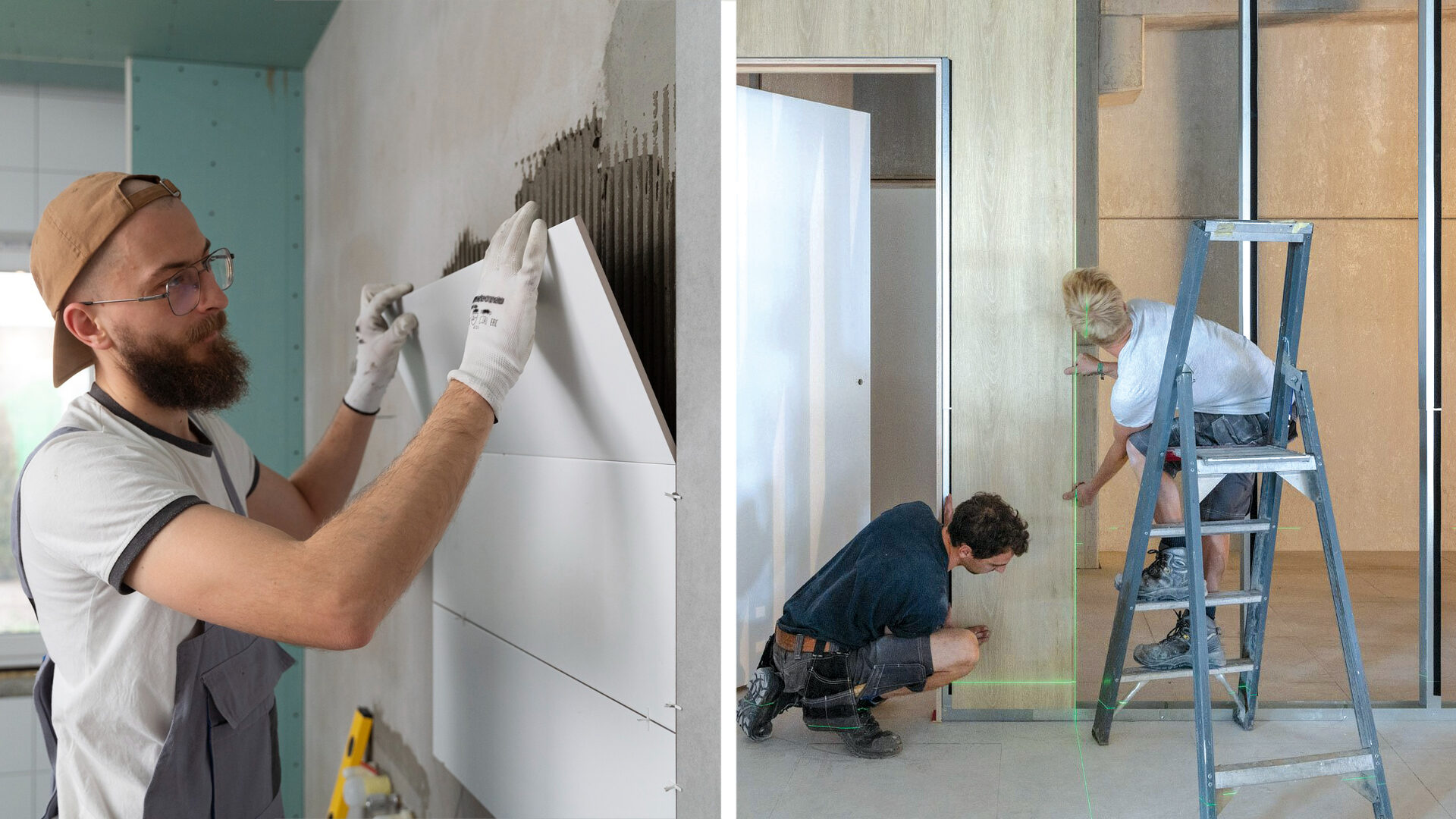When selecting interior wall finishes for high-traffic, high-use environments, such as schools, hospitals, commercial buildings, and public facilities, the decision often comes down to three standard options: tile, FRP (fiberglass reinforced plastic), and PSI wall systems.
As a leader in custom interior solutions, Panel Specialists, Inc. (PSI) has over 30 years of experience designing and manufacturing high-performance wall systems for these demanding environments. Our systems are engineered for aesthetics, durability, and ease of installation, qualities that consistently outperform traditional finishes like tile and FRP.
While each material has its applications, PSI wall systems stand out for their versatility, ease of integration, and superior long-term performance.
In this article, we explore the key reasons why PSI wall systems are emerging as a preferred choice, especially when compared to traditional tile and FRP paneling.
-
Superior Aesthetics and Customization
Tile and FRP panels offer limited design options. Tile provides some visual texture and color variety but can feel repetitive due to grout lines. FRP is often more utilitarian in appearance, commonly found in environments where function outweighs form.
PSI wall systems, however, are available in a wide range of materials and finishes, including high-pressure laminate, phenolic (compact laminate), metal, wood veneer, and decorative glass.
Some systems even allow for custom graphics or branding, making them suitable for spaces where design plays a significant role.
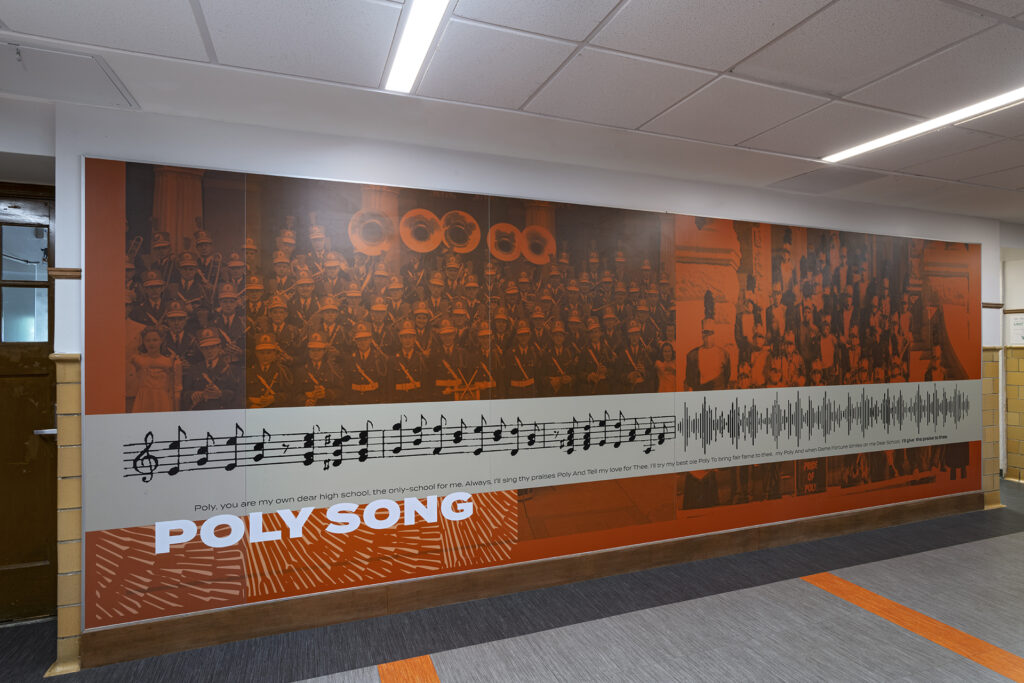
Additionally, wall panel systems can incorporate multiple functionalities into a single surface, such as tackable boards, magnetic panels, and writable surfaces, providing a multifunctional upgrade that tile and FRP simply can’t offer.
This flexibility allows wall panels to align with aesthetic and functional goals, an advantage not easily matched by tile or FRP.
-
Faster, Cleaner Installation
Installing tile can be labor-intensive, requiring surface prep, mortar, grout, and a fair amount of curing time. Even with skilled labor, installation is slow and can disrupt nearby operations. FRP panels install more quickly than tile but still require adhesives and meticulous attention to trim and seams.
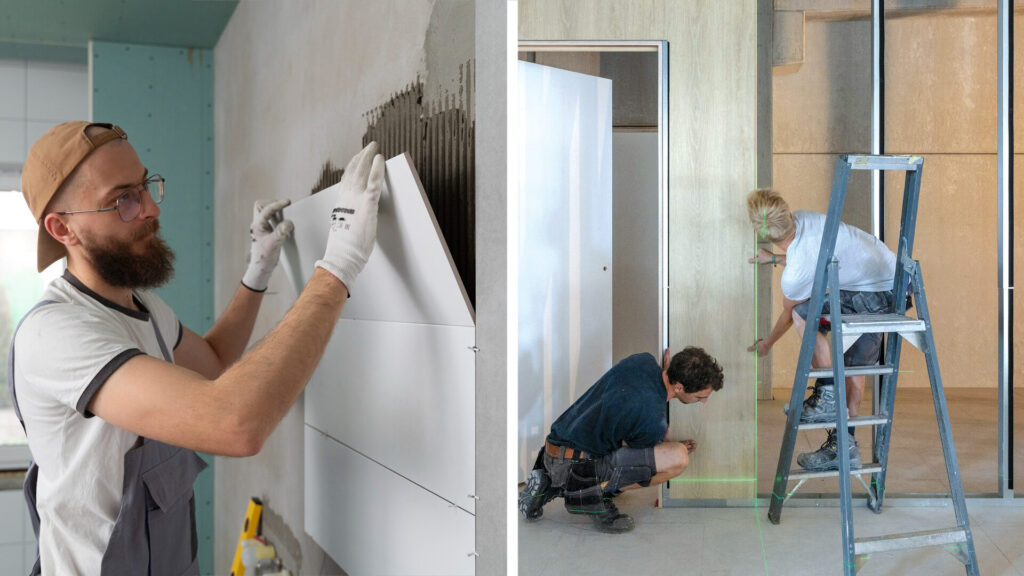
PSI wall systems are typically designed for clean, efficient installation using specialized moldings and adhesives. While they are not installed with fasteners, the modular nature of the systems allows for quicker installation with minimal damage or debris.
At PSI, our systems are engineered to reduce mess and disruption. In school settings, for example, panels can be installed during nights or weekends, thanks to their non-invasive methods and low debris output, ensuring minimal impact on daily routines.

In renovation settings or fast-paced construction projects, this efficiency can significantly affect timelines and labor costs.
-
No Grout, Just Clean Defined Spaces
Grout, the material between tiles, can stain and crack over time, making it harder to keep clean.
Wall panel systems aren’t completely seamless but have carefully designed joints with defined, even gaps. These gaps can be very narrow or a bit wider, depending on the molding used. Some systems use edge banding to seal the panel edges, like PSI’s 310 series, while others, like the 410 series, use “J-molding” and don’t need edge banding.
FRP panels are commonly used in work environments like big box stores, kitchens, and workshops because they are affordable. However, they are thin and more susceptible to cracking or damage from strong impacts. Their plastic edges are often seen as unattractive, and they don’t offer the same level of wall protection or visual appeal.
In contrast, PSI wall systems provide a cleaner, more polished look with durable materials that better protect walls. They offer greater impact resistance and a more refined finish, making them a superior choice for both aesthetics and performance.
-
Exceptional Durability and Longevity
Tiles are durable but prone to cracking under impact. FRP is flexible and can resist light impact but may warp, fade, or become damaged over time due to age and exposure.
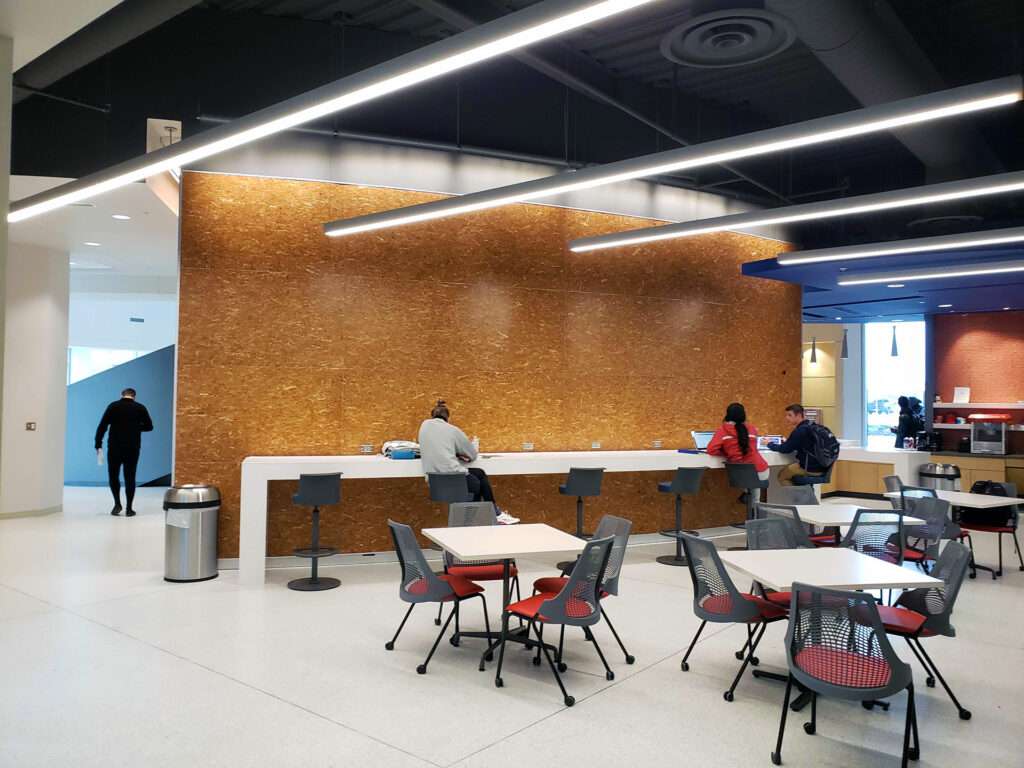
Many PSI wall systems, particularly those made from phenolic or metal materials, are engineered for high-impact resistance, chemical durability, and long-term wear. They are less likely to chip, peel, or discolor, making them ideal for facilities with heavy foot traffic, moving equipment, or frequent cleaning protocols.
This durability translates into fewer repairs, replacements, and overall lower maintenance costs over the product’s lifespan.
-
Better Acoustic and Functional Integration
Neither tile nor FRP provides acoustic benefits; sound tends to reflect off these hard surfaces, often increasing noise levels in busy environments.
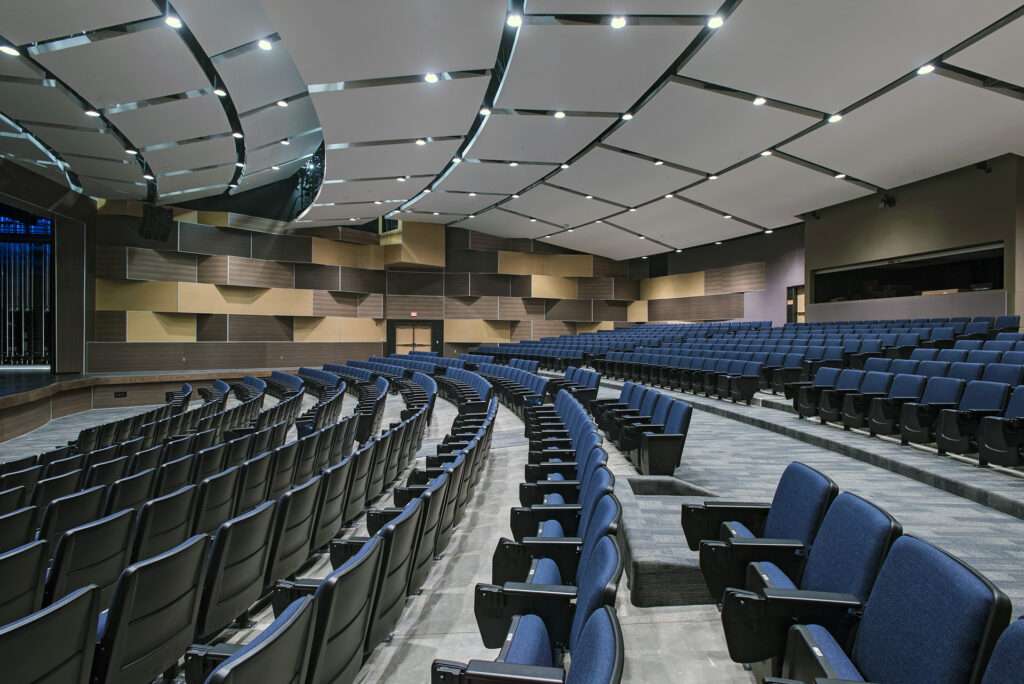
PSI’s wall panel systems are designed to redirect and enhance acoustics within a space, improving sound quality and clarity — ideal for settings such as performing arts centers.
They also integrate more seamlessly with other materials and surfaces, allowing for mixed-use applications. PSI’s wall panel systems can combine HPL with tackable cores, magnetic sections, or writable surfaces — capabilities not possible with tile or FRP.
Also, our Polyester acoustic panels fully integrate with the PSI system, offering additional acoustic functionality without compromising design or installation ease.
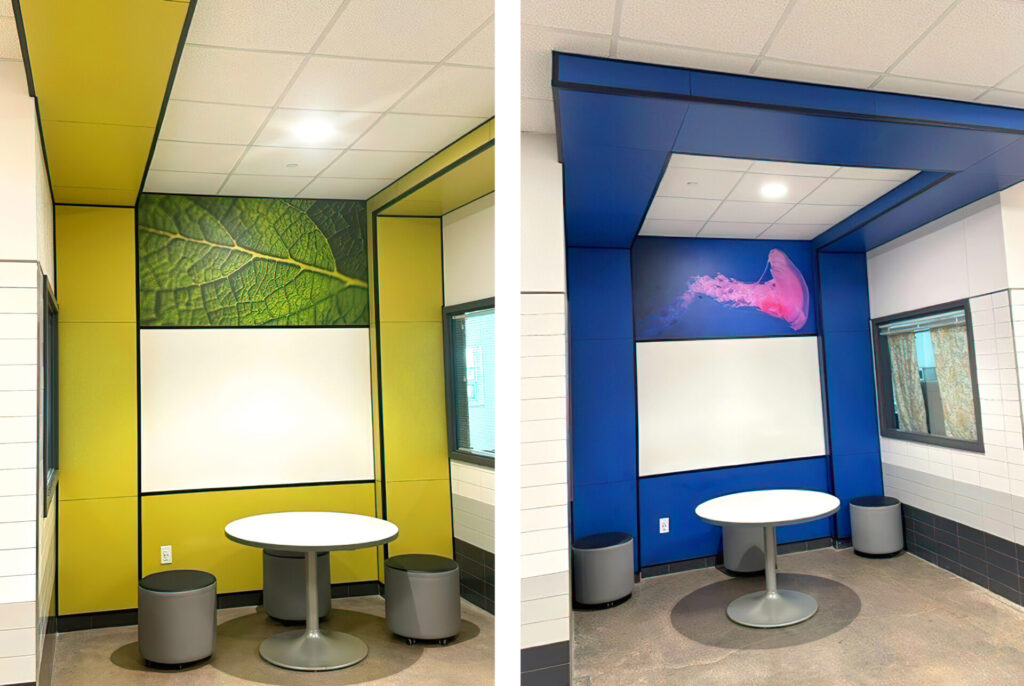
These features make them especially suitable for classrooms, conference rooms, or collaborative workspaces, where interaction and communication are essential.
-
Modern Sustainability and Compliance
As sustainability becomes a bigger priority in construction and design, material choice matters. PSI wall systems can often be specified with low-emitting materials, recycled content, or certifications that support green building standards.
While FRP and tile can meet some environmental criteria, they may not offer the same sustainable options, especially when factoring in installation adhesives, grout products, or long-term maintenance chemicals.
Moreover, wall panels with minimal joints and cleanable finishes can help reduce reliance on harsh cleaning agents and support better indoor air quality.
-
Cost-Effective Over Time
At first glance, tile and FRP might appear more budget-friendly. However, PSI wall systems often prove more cost-effective over time when factoring in installation time, ongoing maintenance, potential repairs, and the shorter service life of these materials.
Because they last longer, require fewer replacements, and typically need less maintenance, wall panels offer strong value over a facility’s lifecycle.
Choosing the Right Wall Solution
All three materials—tile, FRP, and wall panels—have their place, and the best choice will depend on the needs of your project. However, PSI wall systems offer compelling advantages for those seeking a modern, clean, and efficient solution that balances form and function.
At Panel Specialists, Inc., we take pride in delivering wall systems that meet today’s performance standards while anticipating tomorrow’s design challenges. With our advanced materials, clean installation methods, and custom functionality, PSI wall systems are more than a surface — they’re a smarter way forward.
With the right material selection and proper installation, wall panels can outperform traditional alternatives in nearly every category: appearance, performance, durability, and long-term cost.
As industries move toward more innovative, sustainable building practices, PSI wall systems are a forward-thinking choice for interior environments.
For more information, visit our website at panelspec.com or call us at 800-947-9422.

